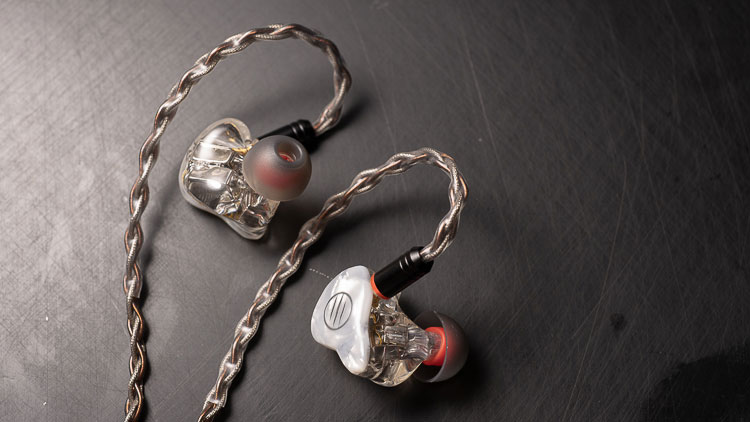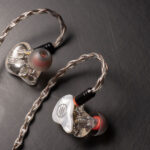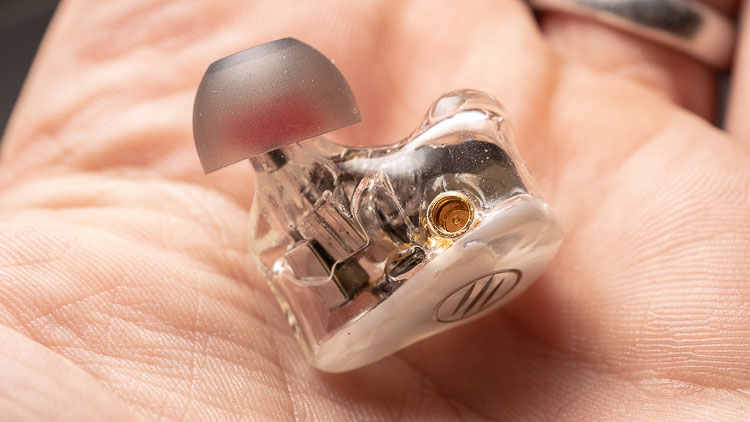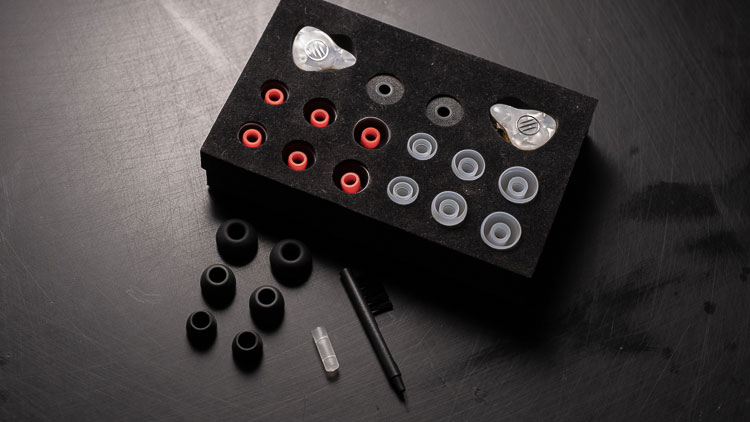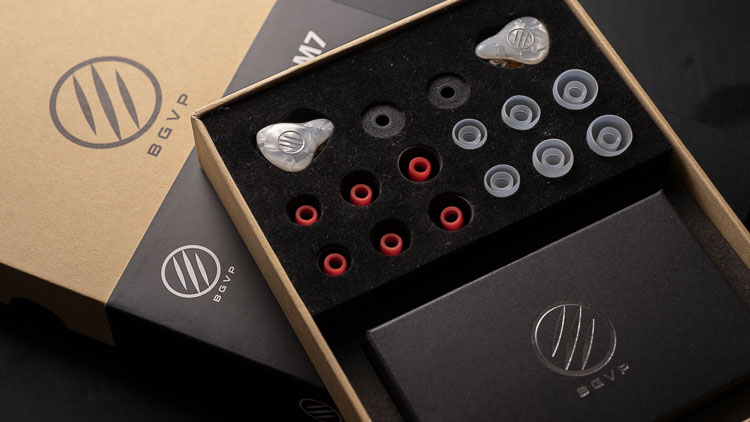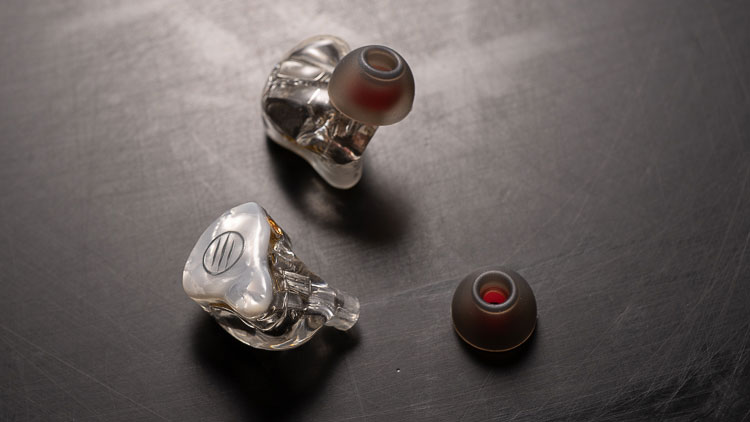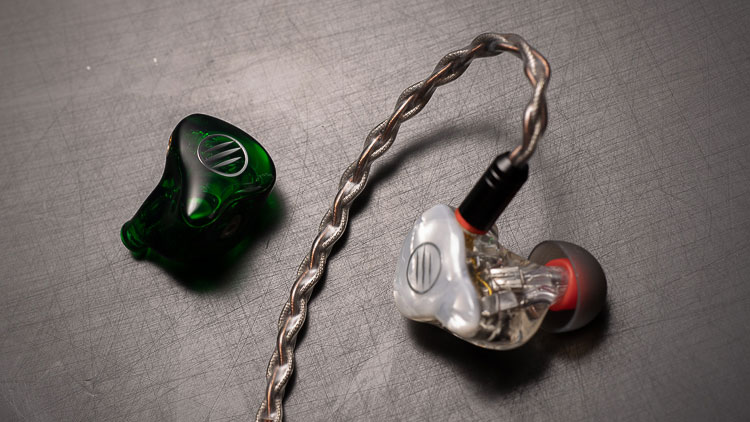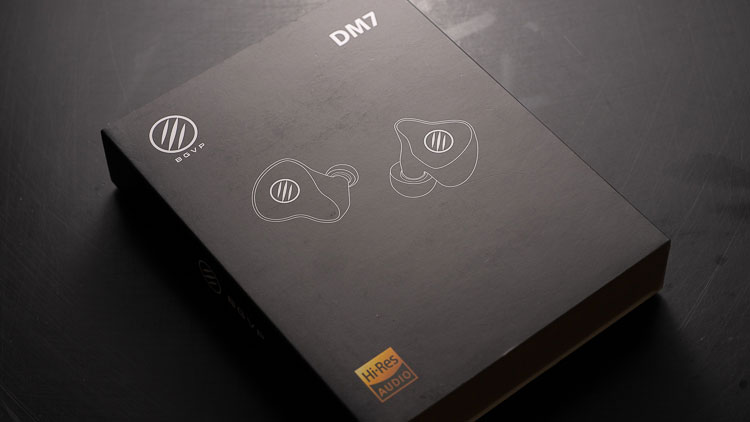The BGVP DM7 is the successor to the very popular universal IEM, the BGVP DM6. It has 6 BA drivers per side and retails around $299.
Disclaimer: The BGVP DM7 sent to us is a sample in exchange for our honest opinion. We thank the team at BGVP for giving us this opportunity.
You can read up on our BGVP DM6 review here. You can also check out their Drop campaign here.
Note, this review follows our new scoring guidelines for 2020 which you can read up on here.
Just like the DM6, the DM7 and its parent company read from a spec sheet like a car’s number plate. But having reviewed the DM7, I was ready for the DM7, and fully recognized BGVP is a market force, and one fully entrenched in the FOTM club.
With six drivers per side, the DM7 is even a crazier tour de force. One thing I wonder: if the DM6 has five drivers per side, and the DM7, six drivers per side, is it correct to say that a DM8 will have seven drivers? Here’s the kicker: will a hypothetical DM0 have a negative number of drivers? Is such a universe even possible?
Tech Inside
With six drivers per side and almost ten years since the JH13Pro’s intro, the DM7 really harkens back to the earphone that totally blew the market up. Of course, the DM7 isn’t 1100$ USD. Yikes. Like the DM6, the DM7’s inner workings are open to inspection. This time, that shell is even clearer. It’s also almost filled to the brim with resin. This reminds me of FitEar’s flagship custom earphones.
And the DM7 being a custom-cum-universal, it’s only fitting that I’m so reminded.
Design
The DM7 is a bit heavier and a bit more solid feeling than the DM6, but the two are similar. Like the DM6, the DM7’s workmanship is high quality. Its wiring is clean if tangled, and as far as I can tell, there are no fingerprints or sealing blemishes. Here and there are bubbles, but even they are seldom seen. It’s as well made as a high-end custom from the JH13Pro days.
The sound tube is even busier, sporting four tubes, each thinner and more cramped than before. Two are damped, one with foam, one with an aluminum cap. Also, like the DM6, the tube lacks wax/debris filters. It’s all very custom-like, a fact about which I’m both glad and upset.
Cables and Connectors
Like the DM6’s cable, the DM7’s is thick, generally free of microphonic noise, and strong. It is also handsome and feels of high quality. Its colors are more somber and the cable’s wires, are suppler than before and loosely weaved in comparison. This makes it easier to wrap back up as well as even less microphonic.
What’s not nice is that braiding errors show up more often, and the sliding neck cinch, once a cheap but largely unobtrusive silicon short sleeve, is now a cheap plastic marble. Yes, it is tougher. Yes, it is easier to slide. But gosh does it make the DM6 cable look like a garage-level product.
Because it is larger, the DM7 is a bit easier to remove from and insert into the ear. This is nice for the normal and large-fingered among us.
Also, like the DM6, the DM7 is light. Unlike the DM6, its cables, softer and more supple, make it nicer to fit around the ear.
Comfort and Fit
The DM7 is comfortable in the ear as the DM6. It is larger and easier to get in and out. And its cables and heat shrink are softer, making the DM7 a lot nicer for glasses wearers. Of course, because the cable is still thick, and, depending on the strength of your glasses frame, it may force glasses arms up, or down, or out. Still, it’s better than the DM6’s cable.
With the exception of the foams, not a single silicon DM6 earpiece was comfortable for my sensitive ears. The DM7’s are better, almost all around. Even their seamed black pieces are softer. The clear pieces’ solid cores keep their mouths wide open but aren’t comfortable in my ears. The new grey pieces are great: not only are they soft and lack equatorial seams, but they also pivot on discrete fulcrums, whose red bits and grey bits cant differentially, fitting almost any strangely bent ear canal. The high-density foams are the same, and comfortable. Unfortunately, both the foams and the grey silicon pieces crowd the canal a bit more, occluding part of the sound output. It appears that for wide-bore sound tubes, sound quality or fidelity and comfort are mutually exclusive.
Like the DM6, the greater DM7 thrusts itself out from the ear rather than across the ear. It’s doesn’t stretch the tragus, and because of this will fit generally medium sized ears without trouble. Small ears will feel cramped. I doubt that many Asian females will be able to get the DM7 in their ears.
Personally, the soft-sided grey tips isolate the best of the silicon bunch, and, alarmingly, create a vacuum seal within my ear. Breaking this prior to removal is something I durst not forget.
Accessories & Packaging
Including the box, the DM7’s accessory package and presentation have improved. The Hi-Res Audio badge is printed rather than stuck separately on, and in matte black, is decidedly higher-end. The wireframe earphones on its front, however, sit at strange angles and probably should be larger. That bit of bad branding aside, the entire set is a big upgrade next to the DM6’s. The ear pads sit in their own foam wells. (And yes, those wells stink, but nothing like Tin HiFi’s foam inserts.)
Including foams and default pieces, there are now ten sets of earpieces, six of which are solid core (clear and black), and three of which differentially pivot. I’ve tested all of them, and that latter set is by far my favorite- at least when it comes to fit.
The accessory package alone would answer questions of whether or not BGVP listened to customer concerns about fit, branding, and more. What an upgrade.
Sound Impressions
Tonality and Presentation
It is remarkable how similar the DM7 sounds to a DM6-‘ified Audio Technica CK10. Since the CK10 is my favorite earphone of all time, this is a really good thing. It is warmer in the lows and mids than the CK10, and not quite as spicy up top. Its stage isn’t as wide-set, nor are its instruments as scalpelled one from another; but hell, all the important at-face bits the CK10 does really well are there.
It is brighter than the DM6, especially in the upper mids, where the DM6 sometimes went a bit dull. Talking about sound this way is strange to me. In the last five years, I’ve undergone a transformation. Early on I liked full-flat neutral presentations with super-wide, detailed stereo scapes. Flat, flat, and flat wide. That was it. But after hitting thirty-four, I really go to liking warmth and depth. It’s why I love the Hidizs MS4. Still, the bright, flat, and wide CK10 remains my favorite earphone of all time. It’s a collection of things, from comfort to build, to sound, really, that keeps me. The CK10 isn’t as able as the MS4 to divulge the friction details in percussion, nor as able to describe the underside of a subwoofer burst.
Neither is the DM7, but the way it closes the distance between the two is enough. I love the DM7 in a way that I could never love the DM6.
Staging
No, the DM7 isn’t a stage monster. It spits a wide, relatively stereo-detailed sound stage, but it doesn’t fade laterally as far as a CK10, T2, or the like. It, does, however, spread wider than a DM6; more importantly, its mids aren’t recessed in either pressure or stereo scape.
Details come through, with an almost centripetal push to the center. And that center has ample detail. Against the DM6, that central detail keeps anchor around the head, pulling attention into it, and less often bumping against stray bass blooms.
There’s also a bit less smear across percussion, allowing for a clearer, studio-close presentation. The bad side of this is that, while the DM6 sometimes pulled the comfy cover over the X, Y, and Z axes, the DM7 shoves it back down again. Obviously, the difference isn’t night and day, but where it shows, the DM7’s clearer mids pull you in.
Y-axis height is good, jumping as high as the brow and dropping to below the jaw, and within that space, the Z-axis moves forward a good step or so. Within this is room to the right and left and a very clear 3D sense defined by all of that plus good instrument separation.
Bass
The DM7’s bass is great. As far as I can tell, it isn’t much different to the DM6’s, but where stereo detail is important, it’s got more. It is similarly raised above neutral by about a step and a half, but this time, with less inward press. This diffuses some of its sound pressure and gives the lows more air.
In fast-paced music, lows can really kick, but, like the DM6, they don’t go super low- at least not low enough to really render much of a yawn into the opening seconds of Marcus Schulz’s Mainstage.
Bass stereo presence presses out to the collar bone and drops about as low. It reaches up to about the eyeballs, and steps forward about half a step.
All in all, even fast-paced bass cues feather out to nothing without recoil, and anchor bass is about as bloom-free as I’ve heard. Naturally, bass attack and decay are just about right on.
If you really really like high bass pressure, the DM7 won’t do more for you than the DM6 did. Add to that clearer distinction between lows and mids than the DM6 and you have a really, but fast-acting balanced low-range output. Sure, it does hip hop well, but it won’t hold on to or exacerbate bloom where you might like it to. Mid and high bass blend really smoothly into low mids.
Mids and highs
As far as I can tell, the DM7 is brighter than the DM6, though not terribly so. It’s just as free of sibilance as the DM6, and get borderline hot-ish when reproducing fast electronic chimes and percussion in bass heavy, V-shaped music. Like the DM6, high reverb is minimal, and as far as I can tell, the body is perfectly damped against shell-induced reverb/echoes. Honestly, I expected its highs to do the DM6 thing domineer a bit over the mids. Instead, the DM7’s highs fly flat out to the side, almost evenly, with few to no peaks that I can suss.
As far as I can tell, in non-electronic, studio-recorded music, highs don’t get hot- or if they do, it is almost imperceptible. Because of this flat-field high range, mids stand out more against highs and lows.
Compared to the DM6, stereo detail is finer and more dynamic. Small stereo nuances stand out more in the highs and lows, and midrange stereo detail and placement are excellent.
Basically, if you liked the DM6’s highs and mids, there’s more of the latter in the DM7, and the former has better-formed stereo detail engine as well as a defense against high-end heat.
Synergy
The DM7 is several steps more sensitive than the DM6 and about half again more sensitive compared to the Audio Technica CK10. It is about as prone to hiss as the Hidizs MS1/4.
Because of this, it is great with high-quality DAPs and smartphones that don’t hiss but is a real bugger with sources of any sort that do. For this reason, the DM6 is far easier to match to a variety of sources.
Select Comparisons
Hidizs MS1
The MS1 is brighter and in certain frequencies, wider, than the DM7, but the difference in staging between the MS1 and the DM7 vis-a-vis the DM6 are not big. The DM7 is warmer in all the right ways. It’s got more and better bass and strikes a great balance between bright and warm, where the MS1 errs bright.
It hisses roughly as much as the MS1, which makes both bad choices depending on the quality of your source’s output amplifier. Sure, there’s 200$ between them, but the MS1 is no mean design, and it really stands out at its price point. The DM7 is better in just about every area, but if you want the last bit of stereo width, the MS1 is the one to choose.
BGVP DM6
The DM6 is warmer, has a more crowded stage, less balance between bass and highs against mids, and rides a more violent V-shape signature than the DM7.
The DM7, with its better smoothing frequency transitions, makes for an easier listen for a large variety of genres against the DM6. Alas, it is way more sensitive, making it a poor companion for MD, certain DAPs, computers, and noisy desktop sources than the DM6, Yinyoo B2B4, and others.
Hidizs MS4
The MS4 is perfect – if you want warmth, texture depth, and value emotion over between-frequency resolution. I love it. But it’s too sensitive. And so is the DM7. But the DM7 is the more balanced, and never gets too hot, heavy, or shiny. As you know, the MS4 can get all of that, and at the wrong times.
The problem is that being just as sensitive as the MS4, the DM7 fails in the same areas. The DM7 is more balanced and more neutral than the MS4. If that sounds good, well, the DM7 sure as heck does.
Yinyoo D2B4
The DM7 straddles the space between the DM6 and D2B4. To be honest, the D2B4’s more forward presentation is generally my cup of tea, but for what the DM7 appears to be trying to do, I think it is spot on.
I really wish it hissed as little as the D2B4. The more I listen to the D2B4, I really wish more earphones were more like the D2B4. That said, the DM7’s more neutral and perhaps better-delineated sound is probably one for the neutral books.
Performance
At 299$ the BGVP DM7 battles it out with a lot of really really good earphones. Against the DM7, the Hidizs MS4 loses out because when hitting the wrong areas, it gets hot and heavy. The DM7’s predominately neutral signature is great for any music. And it does everything fast and with moderation. It is certainly better than the DM6.
And where needed it is both warm and wide. Honestly, I wish it had a bit more sub-bass sound pressure as I really miss hitting those crazy lows. I think the 100$ difference between the DM6 and the DM7 is worth it.
Our Verdict
The DM7 is the DM6 that should have been. It does so much right and in all the right places, that I’m ready to forgive how much it hisses when paired with bad sources. It’s better by a good long shot than the DM6 and the best earphone in the price range I’ve reviewed here at Headfonics.
Diminishing returns being what they are, the DM7 shows well against higher-priced earphones, but against really well-engineered budget earphones is itself pushed against a wall.
For 299$, it is a great buy.
BGVP DM7 Specifications
- Driving unit: six balanced armature units
- Sensitivity: 115dB SPL/MW
- Input impedance: 13.5 Ω
- Frequency response: 10 Hz-40 kHz
- Distortion rate: ≤0.5%(1 KHZ)
- Cable length: 1.2m ±5%
- Weight: around 5.3g
- Cable: Single crystal copper + single-crystal silver-plated copper wire
- Standard equipment: vocal sleeve S/M/L, equalizing sleeve S/M/L, packing package X1, brush X1

